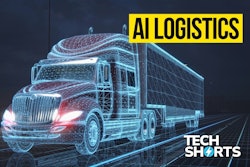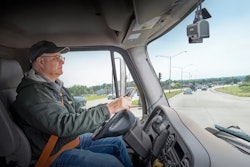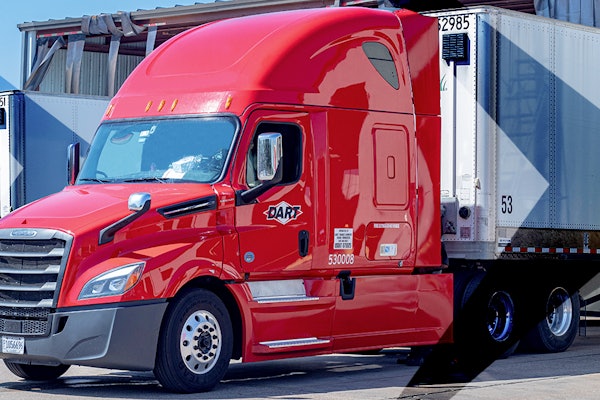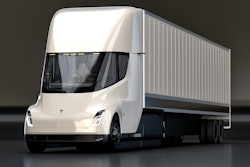It seems in the digital age that things have evolved rapidly, from chunky monochrome monitors with green text to handheld computers, i.e. smartphones, that come out with a new iteration annually.
Artificial intelligence is the next big boom, and it’s changing at a faster pace than any previous phase of the digital revolution, said Trimble Chief Product and Technology Officer Jonah McIntire.
“My second company I founded was applied AI and logistics. Generative AI is a different beast. It's sort of the defining change in our careers, maybe in our lifetimes. It kind of returns us to an era of magnificent technological breakthrough,” he said. “There have been technological breakthroughs, but they've been more incremental in nature. They just don't feel like they're world-changing stuff at the moment. Generative AI feels like it's more of an accelerated world-changing moment. It's like the Internet revolution but packaged into a couple years instead of a couple decades.”
Generative AI is radically shifting the SaaS landscape with a hefty impact on logistics companies, McIntire said during Trimble’s “Connecting the World: AI Innovations in Global Transportation & Logistics” media roundtable event. He was joined by two other Trimble experts to share perspective on the current landscape, emerging trends, and what the future holds for the logistics sector and how Trimble is playing its part.
McIntire said generative AI transforms the software business, making it easier and cheaper to build at a much higher quality, while also changing the purpose of the software.
“Until now, we made tools that make labor more productive,” he said. “With generative AI, the software is not a tool for labor; it’s a direct labor replacement.”
AI ready?
AI follows the theme of connected systems, said Michael Kornhauser, Trimble’s sector vice president of transportation and logistics.
Trimble has a large network of connected systems – not only with its own systems but via integration with hundreds of other point solutions, creating “workflows for our users that ultimately remove some of the swivel chair (i.e. data discrepancies) between different systems,” Kornhauser said.
He said the next value unlocked in these connected systems is leveraging AI across the rich amount of data that passes in and out of these systems. McIntire said the data that logistics companies deal with are entirely addressable by this AI phase of the digital revolution.
Not all data is created equal
Data can be a differentiator, McIntire said, but it can also be a disabler if you have incorrect data.
That is one of the most challenging aspects of implementing AI, said Philipp Pfister, sector vice president at Transporeon, Trimble’s European-based TMS.
[RELATED: The future of TMS is the cloud]
“In Europe, there are some regions where generally digitalization itself needs to happen before you can go to AI,” Pfister said. “If someone is still using pen and paper, obviously, you will not jump immediately to AI. You first need to get systems in order. You first need to join a platform and then basically bring them onto a journey to get there.”
In those cases, the data might not be good enough or rather not ready enough to implement AI. That’s why Trimble assesses the cleanliness of data as it integrates participants into its network, Pfister said.
The company has a dashboard that illustrates to customers how good their data is. For example, it may show that the system has eight out of the 10 information fields it needs to make that participant’s data AI ready.
“Even if the first goal of the integration might not have been being AI ready, we will of course try in this process of integrating parties into the network to make sure that we don't limit ourselves for a later use case,” Pfister said. “Putting this groundwork in at the beginning of the collaboration enables greater success at a later stage.”
He said it’s also important to agree on a data standard to enable information parity. AI can then be layered on top.
Though, McIntire said Trimble hasn’t experienced an issue because its data pools are “pretty clean.”
“If you have a way to validate data as being good or not, then you can go from very unclean data to very good training data,” he added. “You essentially filter out the bad data. Then you do it to a bunch of generations of data – so it’s synthetic; it’s fake data – and you train on those.”
Data mishaps
Standardized data is key to AI automation. That’s the goal to achieve in creating efficiencies, reducing costs and improving resilience in an ever-fluctuating market.
But AI is only as good as the data that’s fed into it.
While that could cause problems, McIntire said current AI models are much more robust than prior generations.
There was no common sense in previous generations, he said. For example, an optimization algorithm in previous generations of AI might ingest a bad line of data, like an unrealistically low shipping rate, and it would optimize everything to run that shipping lane.
“It was doing advanced calculation, undoubtedly, but it was doing advanced calculation without really any sense of what good or even real looks like,” McIntire said.
That’s why AI adoption was flat from around 2017 to 2020, he said.
“People found use cases, but they also found the limitations of those use cases,” he added. “We're in a different S-curve now, where people are not finding the same limitations because in that exact example, you can have a generative AI foundation model, which is set up to look through the rate table and identify things that are out of norm and flag them to be approved.”
The next five years
McIntire said the time is coming when humans will be bosses to AI agents rather than people. AI, he said, will displace labor and perform the true operations of businesses at greater speed.
But, for now, there are still challenges to implementing it.
“I think the fact that it's very unknown and very new is the biggest challenge. This is not settled law area,” McIntire said. “I don't mean that in a legal sense. I mean as in there are no known best practices that one can simply adopt. It's a domain that largely didn't exist until November 2022, and since then it has changed on a pace that people are not yet used to.”
He said that fast pace and constant change in AI has led leadership of companies to sit back and wait for something more concrete. It’s a stimuli loop that makes them feel unsettled, he said.
“I think most of the leaders we talk to of our customers, they want to do something, but they don't yet have a stable best practice that they can adopt.”










